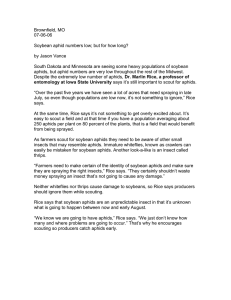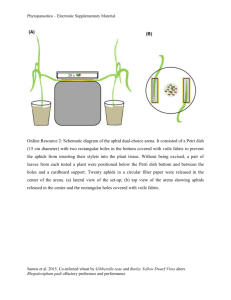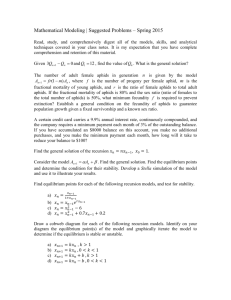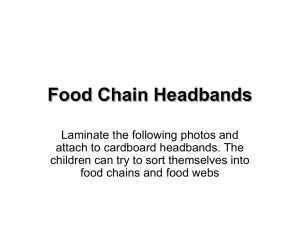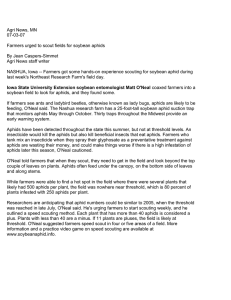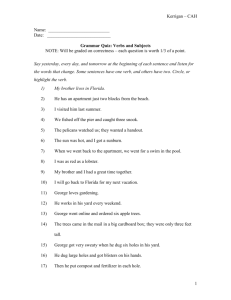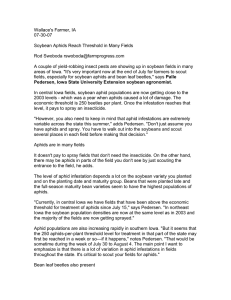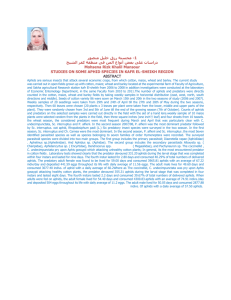Agriculture Online 08-14-07 Don't stop scouting for soybean aphids
advertisement
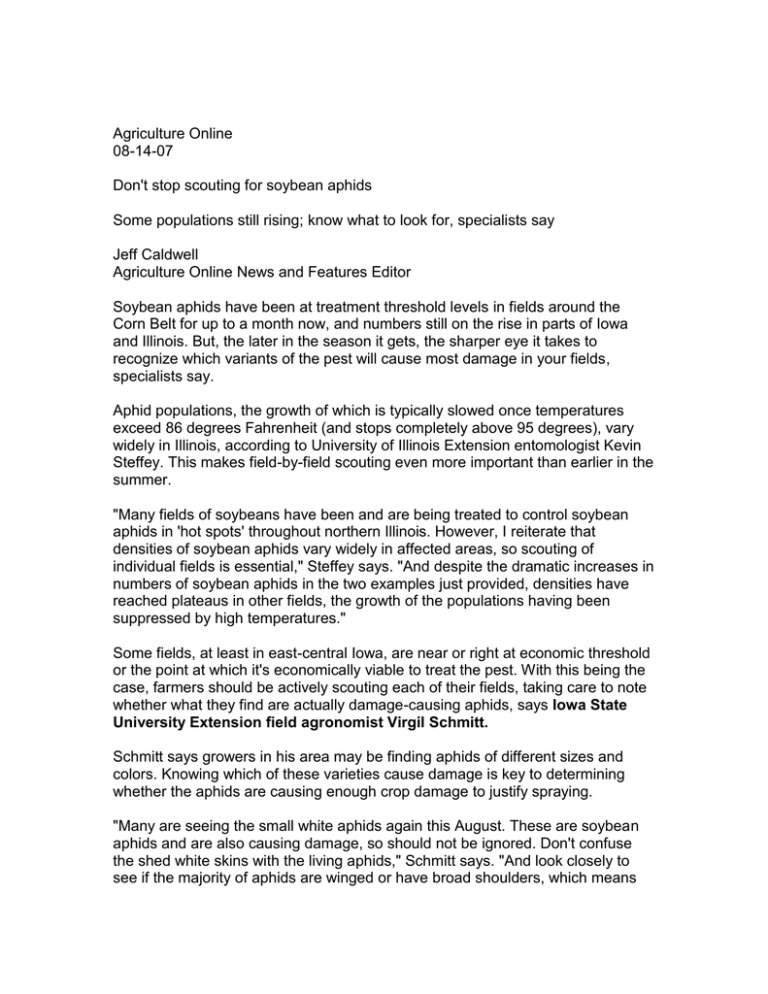
Agriculture Online 08-14-07 Don't stop scouting for soybean aphids Some populations still rising; know what to look for, specialists say Jeff Caldwell Agriculture Online News and Features Editor Soybean aphids have been at treatment threshold levels in fields around the Corn Belt for up to a month now, and numbers still on the rise in parts of Iowa and Illinois. But, the later in the season it gets, the sharper eye it takes to recognize which variants of the pest will cause most damage in your fields, specialists say. Aphid populations, the growth of which is typically slowed once temperatures exceed 86 degrees Fahrenheit (and stops completely above 95 degrees), vary widely in Illinois, according to University of Illinois Extension entomologist Kevin Steffey. This makes field-by-field scouting even more important than earlier in the summer. "Many fields of soybeans have been and are being treated to control soybean aphids in 'hot spots' throughout northern Illinois. However, I reiterate that densities of soybean aphids vary widely in affected areas, so scouting of individual fields is essential," Steffey says. "And despite the dramatic increases in numbers of soybean aphids in the two examples just provided, densities have reached plateaus in other fields, the growth of the populations having been suppressed by high temperatures." Some fields, at least in east-central Iowa, are near or right at economic threshold or the point at which it's economically viable to treat the pest. With this being the case, farmers should be actively scouting each of their fields, taking care to note whether what they find are actually damage-causing aphids, says Iowa State University Extension field agronomist Virgil Schmitt. Schmitt says growers in his area may be finding aphids of different sizes and colors. Knowing which of these varieties cause damage is key to determining whether the aphids are causing enough crop damage to justify spraying. "Many are seeing the small white aphids again this August. These are soybean aphids and are also causing damage, so should not be ignored. Don't confuse the shed white skins with the living aphids," Schmitt says. "And look closely to see if the majority of aphids are winged or have broad shoulders, which means they have wing pads and are going to form wings. If the majority are winged or are forming wings, they will leave the plant, and perhaps the field, and an insecticide application may not be necessary. Also, brown colored aphids are either dead or will soon die, so do not count them." How much longer should growers scout soybean aphids? With more rainfall in recent weeks compared to earlier in the summer in many parts of the Corn Belt, the window for scouting is likely wider than under drier conditions, Schmitt says. "Because of the unusual rainfall this late summer, soybeans are continuing to flower later into the season than normal, so ISU is suggesting that you manage soybean aphids until growth stage R 6.0," he says. "To determine if your field has reached growth stage R6.0, examine several plants. One each, find the main stem and then find the uppermost node that has a fully expanded trifoliolate leaf. Examine the pods at that node and at the next three nodes down the stem. If any of the pods contain a green seed that fills the pod cavity, it has reached R6.0." The economic threshold for treating aphids is 250 insects per plant, with 80% of a given field infested. "It is best to count all aphids on a few plants to get a feel for what 100 and 250 look like and then estimate from that point on," Schmitt adds.
